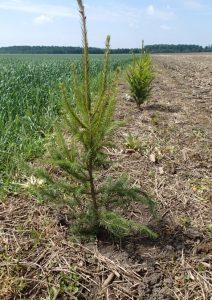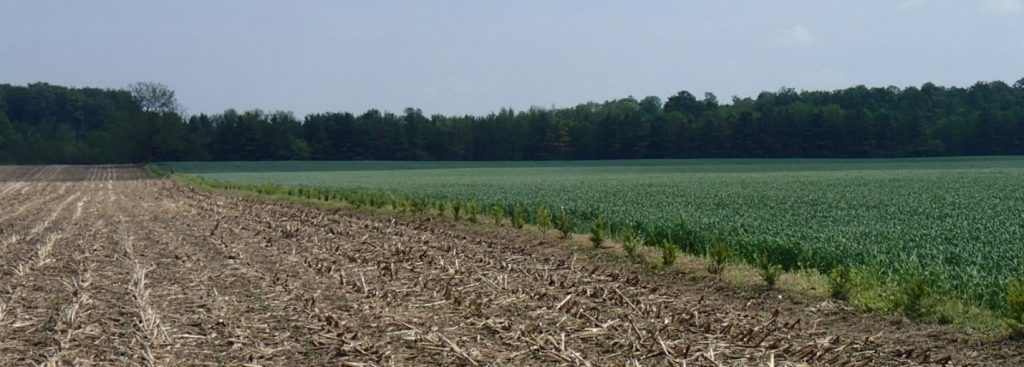 Maitland Conservation recently had the opportunity to chat with Bill Roy, a farmer, seed rep, and dedicated buffer and cover crop planter for many years. Bill started operating a 500-acre cash crop farm in the Maitland watershed with his father in 1980. The operation is a traditional corn, soybean, and wheat rotation, and it is benefitting from the many restoration projects that Bill has undertaken on the property.
Maitland Conservation recently had the opportunity to chat with Bill Roy, a farmer, seed rep, and dedicated buffer and cover crop planter for many years. Bill started operating a 500-acre cash crop farm in the Maitland watershed with his father in 1980. The operation is a traditional corn, soybean, and wheat rotation, and it is benefitting from the many restoration projects that Bill has undertaken on the property.
In the past thirty years, Bill has done many planting projects, including buffers, windbreaks, and squaring off marginal land. For example, twenty-five years ago, he converted an acre of marginal land to a streamside buffer that also acts as a wildlife corridor.
For Bill, the benefits of planting are numerous. When asked why he plants, he responds that it supports “Biodiversity, [it’s] an area for wildlife, and some of it was marginal ground that really wasn’t that productive.” He adds that sometimes marginal corners and sections of land are more difficult to access, and that reforesting those pieces can make the field easier to manage. Responding to the trade-off of surrendering productive land, he says, “We have no regrets doing that at all… it made things just as easy not to have to do it, plus it’s beneficial for wildlife.”
In terms of windbreaks, Bill notes that their soil protection offers an economic and yield boost, according to his yield monitors. Bill also enjoys the recreational hunting and deer that make use of the restored areas.
For those interested in undertaking a planting on their property, Bill offers a tip to manage the timing. Since tree orders arrive at the end of April, just before field work starts, he recommends recruiting friends and family to help plant. “Get all hands on board,” he advises. “A free meal sometimes works.” In the case of Bill’s farm, the plantings are always a family endeavour involving the help of his wife, Pat, and his children, Michael, Jenna, and Alanna. More recently, Michael’s partner, Maeghan, and Jenna’s partner, Mudi, have also joined in. Last year they formed a planting assembly line together, despite the inclement weather. It “is always a bit of a rush,” he says. “But we’ve been able to do it and it’s definitely worth the outcome.”
If Bill’s story has inspired you to do a planting on your own property, Maitland Conservation has up to 100% funding available for streamside buffer projects in the watershed. Projects that convert marginal land by streams into grasslands and wildflowers are also eligible. If you would like to learn more about project options for your property and how to get started, check out our page on New Grants for Stream Buffer Projects or contact:
Greg Urquhart
Forestry Technician
[email protected]
519-335-3557 ext. 235
Shannon Millar
Restoration Technician
[email protected]
519-335-3557 ext. 233

Recently planted windbreak.
